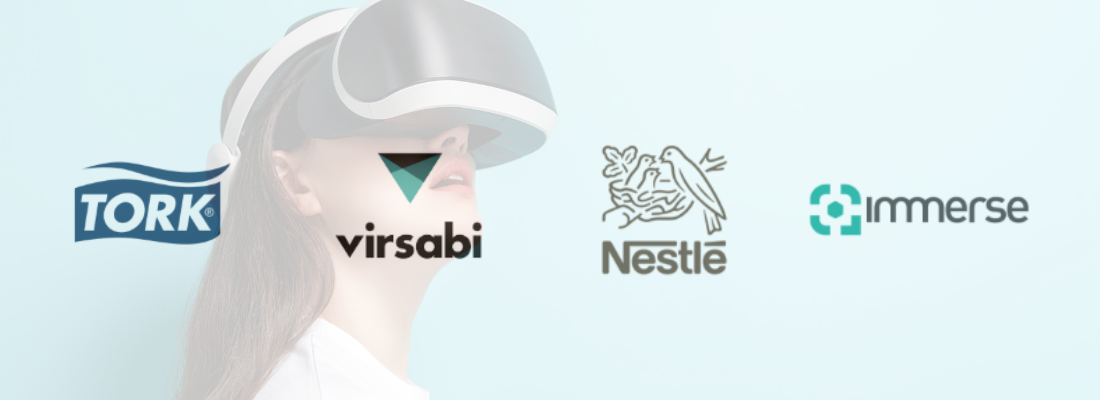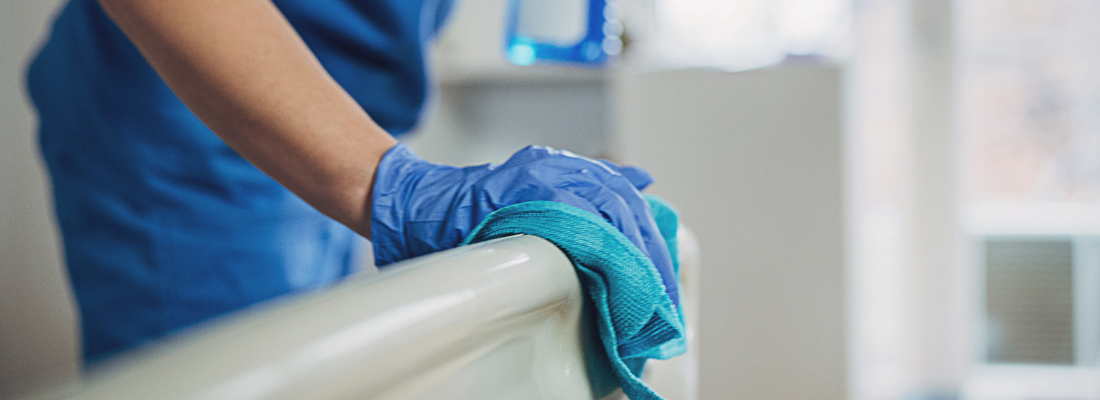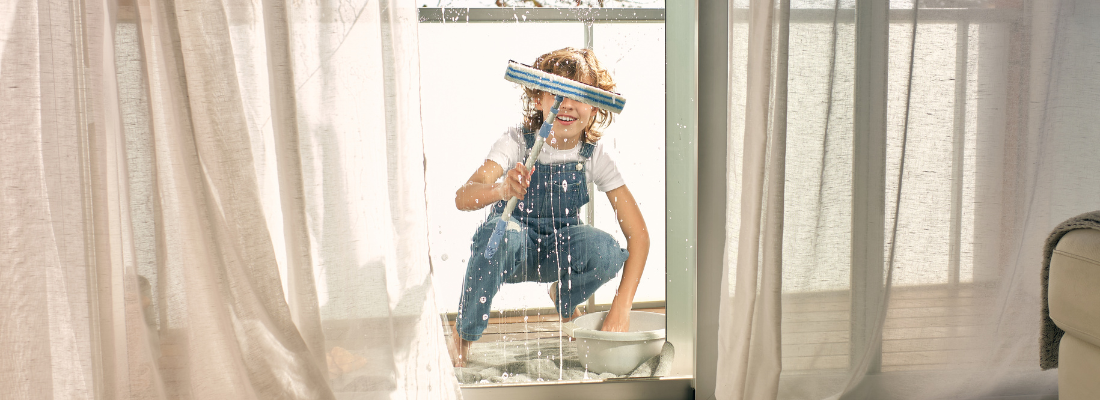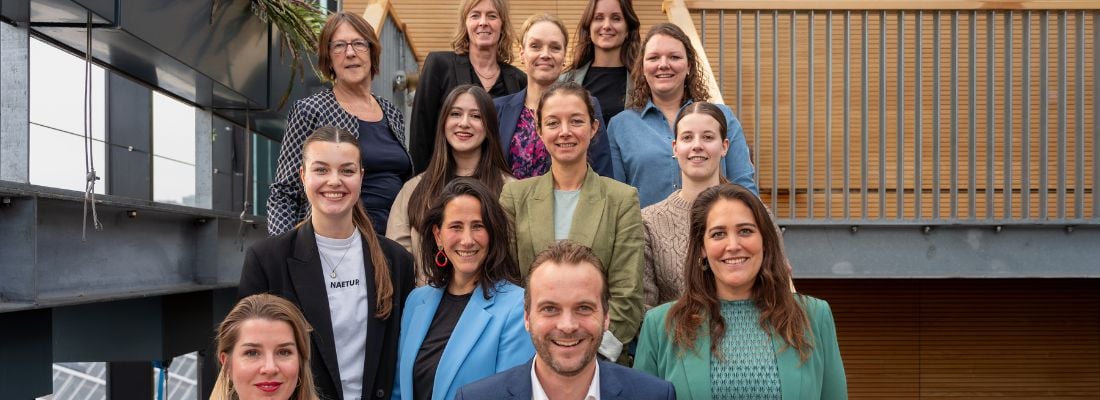A helping hand for healthcare (HEHSAF launch on 20 Oct)
Clean Hospitals Day 2023 at Interclean China marks the global launch of the Healthcare Environmental Hygiene Self-Assessment Framework (HEHSAF)
Interclean has always been proud to be on the forefront of pioneering initiatives by showcasing the most cutting-edge research and developments in the dynamic field of professional cleaning and hygiene. We’re excited to be acting as the platform for the upcoming global launch of the Healthcare Environmental Hygiene Self-Assessment Framework (HEHSAF) on Clean Hospitals Day 2023 on 20 October at this year’s Interclean China show in Chongqing.
Why is healthcare environmental hygiene so vital?
According to the European Centre for Disease Prevention and Control (ECDC), health care-associated infections (HAIs) and antimicrobial resistance (AMR) are among the most serious public health problems, globally and in Europe. HAIs are a major threat to patient safety worldwide. The importance of the health care environment in patient care is not always adequately addressed. Currently, no overview exists of how health care environmental hygiene (HEH) is performed around the world.
Healthcare environmental hygiene is increasingly being recognised as an important component in infection prevention and control. It includes cleaning and disinfection of surfaces and instruments, air and water control, laundry and textiles, waste management and hand hygiene. Environmental hygiene is a complex concept involving cooperation between several departments such as microbiology, infection preventionists, facility management, procurement, and cleaning services.
The HEHSAF has been initiated in response to an urgent need to optimise healthcare environmental hygiene in healthcare facilities around the world.
What is the HEHSAF?
To explore the significance of this exciting launch, Interclean recently caught up with Alexandra Peters PhD, Scientific Lead for Clean Hospitals for the Institute of Global Health at the University of Geneva. Alexandra and her research team have spearheaded the research and development of HEHSAF to help healthcare facilities to identify areas for improvement in their environmental hygiene programs as well as benchmark this improvement over time.
“This is the first time that a global snapshot of healthcare environmental hygiene programs has been attempted. The tool is geared towards IPC experts and environmental hygiene managers to help them identify areas for improvement in their facilities,” explains Alexandra.
The HEHSAF consists of a 96-question secure, online tool based on the multimodal improvement strategy. The multimodal improvement strategy is a theoretical framework for behavior change which has been validated for healthcare settings and is one of the most widely used. “After being developed in Geneva, the strategy has been used globally by the World Health Organization for hand hygiene improvement since 2009, and thousands of hospitals have implemented it,” she observes.
HEHSAF has been in development since 2018 and contains the input of close to one hundred people. A pilot study using an earlier version of this unique tool was conducted by Clean Hospitals in 51 healthcare facilities in 35 countries (AJIC 2022, 12:50, 1302-1310). It was then further developed with the help of an international expert group and validated internationally in seven additional countries.
“The framework is divided into components such as: institutional capacity and practices, how surfaces are cleaned, specific environments, sterilization methods, water control, air control, waste management, and laundry. There is also emphasis on how staff are trained and educated, ensuring there are proper monitoring and feedback reminders in the workplace, and establishing a general climate of institutional safety,” explains Alexandra.
“We’re fortunate to have the support from entities such as Interclean to help us in our quest to spread the word about HEHSAF and leadership from respected experts in the field, especially from Clean Hospitals Chair Professor Didier Pittet (former Director of the Infection Control Programme at the University of Geneva Hospitals and Faculty of Medicine, Geneva, Switzerland). As one of the founders of Clean Hospitals, Prof Pittet was instrumental in implementing the successful global hand hygiene programme and is now committed to raising awareness for hospital hygiene worldwide using the same successful strategy.
Prof Pittet is the keynote speaker at this year’s China edition of the HCF (Healthcare Cleaning Forum) in October as part of the Interclean China programme.
A definite need for widespread improvement
Overall, 51 HCFs from 35 countries participated. Almost all HCFs surveyed (50/51, 98%) were found lacking in some or all of the five components of the WHO multimodal strategy independent of income level. The results demonstrate the widespread challenges in HEH institutions are facing around the world.
“What we found was that all except for one of the hospitals were majorly lacking in the major components of healthcare environmental hygiene. And, keeping in mind that this is self-reported data, it's probably overestimating the good hospitals because people want to answer these kinds of questionnaires in a way that puts them in a good light. So, it's very possible that this is close to 100%,” maintains Alexandra.
This pilot survey was invaluable for preparing the HEHSAF tool for further testing and highlighted the need for major improvement in HEH programs worldwide. From the data gathered, it is obvious that there are major resource, structural and cultural challenges to HEH implementation.
Though there are major differences among HEH programs, issues with access to products and equipment, training, monitoring, and workplace culture remain widespread. There was a definite need for improvement in most of those healthcare facilities surveyed.
Some alarming findings from the pilot study and the critical need for a tool such as HEHSAF
Alexandra mentions some of the worrying outcomes that were uncovered during the pilot study. “We found some pretty shocking results. For instance, in some facilities the cleaning teams are still reusing rope mops from one room to the other, which are almost impossible to disinfect even if they were changed between rooms, which was not the case. Many healthcare facilities don't separate normal waste from hazardous or medical waste. Many have an open dump site nearby. Only a third of facilities in higher income countries, and 7% in lower income countries said that their environmental services staff receive comprehensive formal training,” she reveals.
“Nearly half had almost no management present. 18% didn't use any kind of workplace reminders, including the posters for safety or how to do chemical dilutions, or instructions on those kinds of things. 16% of healthcare facilities said that the cleaners and the nursing staff couldn't communicate because they didn't speak the same language. And upward communication with direct superiors was only possible in 25% of facilities surveyed,” says Alexandra.
A more focused approach on elevating the reputation of cleaning and hygiene in healthcare facilities
One of the key aspects within healthcare environmental hygiene that concerns Alexandra is the relatively poor perception of cleaners and the significance of their role in healthcare institutions. “One of the major things that we're trying to address as Clean Hospitals is to spread awareness that cleaning in hospitals is not a menial or useless job that is merely there to keep the patients happy – and one that doesn't need to be paid well. Healthcare cleaning is a specialised profession and not just a job,” she maintains.
“If we want to make any lasting impact, we need to get hospital management and hierarchy to change their mindset with regards to their cleaning teams. When you actually evaluate the multimodal model, four out of the five elements are human related elements, such as workplace culture, monitoring, feedback, training and education – these are all very dependent on people. Together with having the right machines and products in place you need to ensure there is the necessary investment in cleaning staff. Without this you can't have a functional healthcare environmental hygiene system,” says Alexandra.
HEHSAF can definitely play a role in bringing these types of issues to the attention of decision makers.
How can healthcare facilities access HEHSAF?
The HEHSAF can be accessed here: https://redcap.link/HEHSAF.
The HEHSAF is published on the online platform REDCap, a secure web application for building and managing online surveys and databases. It is specifically geared to support online and offline data capture for research studies and operations. Available exclusively to institutions, REDCap is used and by the most prestigious universities around the world.
Currently over 6600 institutions in over 150 countries trust the security of the platform.
Although healthcare facilities who complete the HEHSAF will have access to their own detailed data, only anonymized and aggregated data will be published or shared. This is of utmost importance to ensure that healthcare facilities are comfortable being transparent when filling out the tool.
How can the cleaning and hygiene industry get involved?
Sharing and completing the HEHSAF is a unique opportunity for both healthcare facilities and industry. Companies providing products and services to hospitals can accompany their clients in identifying areas for improvement, as well as proposing individual solutions.
There are no costs involved for the manufacturers to use the HEHSAF with their clients. “I think it's important that tools like this are free and that there's as much support for them as possible to make them accessible for everybody to use,” maintains Alexandra.
However, most manufacturers, although experts in their sectors, do not have a clear overview of how a highly functioning HEH program works in hospitals. In order to address this issue, Clean Hospitals offers a training course with certification on how to speak with hospital decision makers and use the HEHSAF to help hospitals improve. If companies are interested, they can join Clean Hospitals and then sign up to attend the 2-day course in Geneva after which they will receive a certificate of competency.
What does the future hold for HEHSAF?
“I’m just thrilled that we’ve gotten to this stage, after five years of hard work – it’s a great feeling!” says Alexandra enthusiastically.
The English version will be launched at ICPIC in Geneva, September 13-15, the and the international launch of the HEHSAF be on October 20 during International Clean Hospitals Day which will be held on-site during Interclean China, Chongqing 18-20 October 2023.
The tool is currently being translated and validated in: Chinese, Croatian, French, Portuguese, Spanish and Turkish. From this starting point a worldwide campaign will be rolled out. Alexandra says they are also working on doing additional self-assessment tools for specific environments in healthcare.
So, watch this space!
An exciting new roadmap to optimise healthcare environmental hygiene
With global implementation, the HEHSAF will give institutions a roadmap for improving their environmental hygiene, support environmental services staff, increase the visibility of healthcare environmental hygiene on a global level, and ultimately save lives by reducing healthcare associated infections.
“With the support of big names in the industry such as Interclean, the database that we’ve established and the likes of Professor Pittet adding his 30 years of expertise to the initiative, I feel like we have a pretty good chance that it's going to work quite well,” says Alexandra optimistically.
We look forward to your participation.
To be part of the exciting launch of HEHSAF as well as many other amazing highlights from the international cleaning and hygiene world, secure your place now to join us at Interclean China 2023. Register here.
Share your stories with us!
Do you have an innovation or interesting news you would like to share with the professional cleaning and hygiene industry? The Interclean website and social media channels are a great platform to showcase your stories!
Please contact our press department interclean@rai.nl.
Are you an Interclean exhibitor?
Make sure you add your latest press releases to your Company Profile in the Exhibitor Portal for free exposure.
Receive the best newsletter on cleaning & hygiene - straight to your inbox!
We promise never to send you spam and you can unsubscribe at any time!








